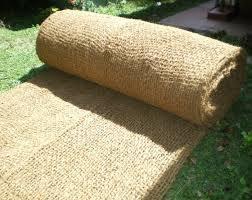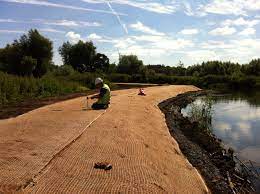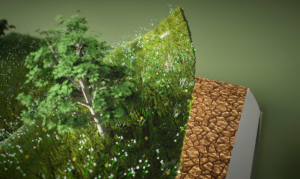A Comprehensive Guide on What is Jute Geotextile
Jute is a rain-fed crop that has historically been used for wrapping. However, as time has passed, it has demonstrated its incredible plasticity by displaying a variety of unique morphological characteristics that have opened up new options for diversification. Jute Geotextile (JGT) is an important jute product with a wide range of applications. It has a wide range of applications, including civil engineering, soil erosion management, road pavement building, and riverbank protection.
The function of JGT is remarkably similar to that of man-made synthetic Geotextiles (Geosynthetics), which are created from a variety of petrochemical derivatives. JGT’s effectiveness has been demonstrated in the number of researches conducted both in India and overseas.
JGT’s biodegradability aids in the rapid recovery of displaced vegetation by merging with the soil, enhancing permeability, keeping the right humidity as “mulch,” and generating a micro-climate favorable to vegetative development. JGT is widely regarded as the most praised natural fabric for providing biotechnical solutions to a soil that has been exposed to the elements.
Some experts believe that biodegradability is negative. However, it still has a bright future since it has a two-season effective life lifetime, which is sufficient for natural soil consolidation by generating a consolidated layer known as “filter cake.” Extensive field trials have confirmed this. As a result, the biodegradability of JGT is not a deterrent. It’s commonly utilized in the construction of roads.
Geotextiles are a type of technical textile that is used to solve numerous soil-related issues in civil engineering. Synthetic polymers (petrochemical compounds) or natural fibers are used to make them.
Table of Contents
Benefits of using jute geotextiles
(i) Biodegradable jute geotextiles are less expensive than natural and synthetic geotextiles.
(ii) Because jute is an agricultural crop, jute geotextiles are environmentally beneficial and blend in with the soil, inflicting no harm to the environment.
(iii) It is incredibly simple to install; even inexperienced/semi-skilled people can accomplish it.
(iv) The value of a wasteland can be increased by converting it into productive land.
(v) Repairing road and railway slopes with problematic soil on a regular basis is greatly reduced.
(vi) There is no pollution of water or air.
(vii) Dams and reservoirs’ water storage capacity can be maintained with minimal investment.
Potential application areas for jute geotextiles

(i) Soil erosion control
During the rainy season, the passage of rainwater removes soil particles from the earth’s surface, resulting in soil erosion. On steep slopes, places where protecting vegetation has been eliminated, or simply where the pressures of rainfall and wind exceed the soil’s resistance to separation and movement away, erosion rates are maximum.
By preserving soil particles, geotextiles can help to avoid soil erosion. Because jute geotextiles degrade quickly, their useful life for erosion prevention can be limited. The geotextiles break down over time and do not stop vegetative growth. In reality, they encourage vegetation to grow, which then serves as long-term erosion control and slope protection barrier. As a result, jute geotextiles aid in the prevention of landslides, the reduction of soil erosion, and the enhancement of soil fertility.
(ii) Reinforcement
Jute geotextiles, as reinforced material, can be utilized in weak soils to offer reinforcement, significantly enhancing the soil’s carrying capacity and reducing uneven settlement under subsiding ground conditions.
Jute geotextiles can help to strengthen soils that are prone to dispersion and rotational slides. Geotextiles made of jute can efficiently control such failures. It also absorbs some of the tension that could otherwise result in shear failure. Forestation in semi-arid areas is also aided by jute geotextiles.
The primary reinforcement function assigned to geotextiles in paved roads is known as lateral restraint of base-course. The lateral spreading motion of the base course aggregate can be seen when traffic loads are applied to the roadway surface. As the material moves down and out, away from the load, tensile lateral strains are formed in the base below the applied force. Vertical strains emerge due to lateral movement of the base, resulting in permanent surface deformation in the wheel path.
The addition of a geotextile layer to the base allows for shear contact to occur when the base tries to move laterally, stretching the geotextile. The comparatively high stiffness of geotextile prevents lateral tensile strain from developing in the base close to the geotextile. As a result, the first reinforcement mechanism correlates to a direct reduction in the base aggregate’s lateral spreading, resulting in reduced vertical deformation of the roadway surface.
(iii) River & canal bank protection
Hill slopes, road/railway embankment slopes, bridge approaches, reservoir slopes, viaducts, water bodies, and other terrain are all protected using jute geotextiles. Jute geotextiles are better material for protecting riverbanks and embankments from floodwater and seashores from wave surge due to their flexibility and permeability, which allows for cross-flow of water. Where the slopes to be protected are in contact with water, the environmental benefits are even more crucial.



